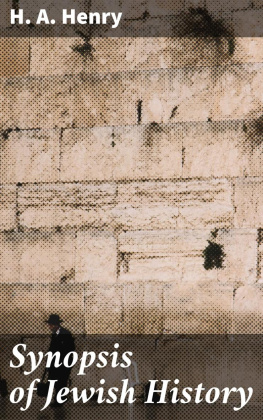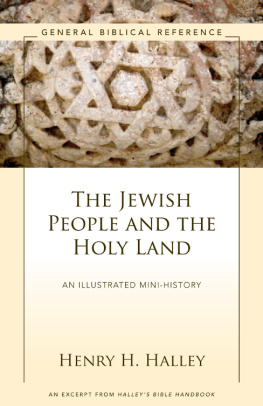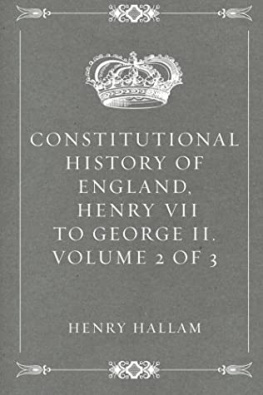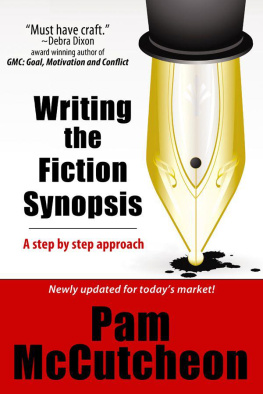CHAPTER I.
Table of Contents
Of the Return of the Jews from the Captivity of Babylon, and the Rebuilding of the City of Jerusalem and the Holy Temple.
In fulfilment of the prophecies of Jeremiah and the other prophets, Israel and Judah were carried into captivity by Nebuchadnezzar, king of Babylon, in the days of Zedekiah, the last king of Judah; and as predicted by the prophets of the Lord, the bondage continued during seventy years.
This banishment was inflicted as a just punishment on the people for their repeated misconduct and impiety towards the Gracious God, and for their direct opposition to the constant exhortations and unceasing warnings of the Almighty, through the medium of his inspired and holy prophets.
The seventy years of captivity being ended, God put it into the mind of Cyrus, king of Persia, again to restore Israel to their own land and possessions, thus fulfilling the prophecy of Isaiah, which was pronounced by him above one hundred years previously. Accordingly Cyrus permitted the Jews to return to Jerusalem and to rebuild the temple. He also restored to them the golden and silver vessels which were used for divine service in the former temple built by king Solomon.
Many of the people of the several tribes availed themselves of this opportunity to return to the land of their fathersbut so far as history informs us, it appears that the majority of those who returned to Jerusalem, consisted chiefly of the tribes of Judah and Benjamin, together with a number of Priests and Levites. And now it was for the first time, that they were all united under the title or name of Jews.
The people were led forth under the direction of Zerubbabel, the grandson of Jehoiachin, king of Judah, who became the governor of the land by a commission granted at the hands of king Cyrus; and Jeshua, the grandson of Seraiah, who was slain by Nebuchadnezzar, was installed high priest.
The people having returned to their own land, the first thing which occupied their attention was the rebuilding of the temple, for which purpose they set about making collections, both of money and materials, and gathering themselves together at Jerusalem, they set up the altar, and offered sacrifices thereon in gratitude to God for his goodness in thus restoring them to their own country and possessions.
When the foundation of the new temple was laid, great rejoicings took place among the people. Yet, many of those who had grown old in the captivity, and who still had the recollection of the glory and magnificence of the first temple, mourned and grieved for its loss, and very much despaired of the second temple ever approaching the first, in beauty, splendor, or holiness.
The building of the second temple was very much interrupted by the neighboring people, who manifested great enmity toward the Jews, and evinced much jealous feeling, when they saw them restored to their own country, and thus likely to recover their long lost national position in the world.
Yet, notwithstanding all the difficulties which presented themselves, and in spite of all the representations made by their enemies, the Jews were favored with great assistance from the court of Persia, in order to complete their noble undertaking. And then it was, that after a period of twenty years interrupted labor, the second temple rose on the very same spot on which the first noble fabric had adorned the happy days of the royal Solomon, the son of king David.
In the days of Darius Hystaspes, complaints were made by the enemies of the Jews, in order to prevent them from continuing the building of the temple. This prince, considering the interruption to be the result of the malicious insinuations of the Samaritans and their followers, instituted an inquiry, and it being found on record at Babylon that permission had been granted to the Jews by Cyrus to rebuild the temple at Jerusalem, Darius immediately gave orders that the work should be continued undisturbed. And in the sixth year of the reign of Darius, the second temple was completed, and dedicated for divine worship. Sacrifices were resumed, and offered upon the altar of the Lord as in former days. Great rejoicings prevailed, and the festival of Passover was in that year solemnized in great splendor, and with grateful feelings toward the God of their fathers.
Happy, however, as the people appeared to be in again beholding the house of God reared and dedicated to his holy worship, they still felt and saw the deficiency in the one, when compared with the other; for it must be observed, that in the second temple but few of the glories remained which had adorned the first temple, so renowned in history for its beauty, magnificence, and architectural delicacy and elegance.
The temple erected by king Solomon at Jerusalem, was built after the model of the tabernacle erected in the wilderness. This superb edifice was completed in about seven years. Its grandeur and magnificence excited the envy and the curiosity of all the surrounding nations.
The glory of this temple, however, did not consist in the magnitude of its dimensions alone. The main grandeur and excellency were in its ornaments, the workmanship being everywhere curiously and exquisitely wrought by the most expert workmen of the day. But still more admirable in this majestic building, were those extraordinary works of divine favor with which it was honored. These, indeed, were excellencies and beauties derived from a divine source only, distinguishing and exalting this sacred structure above all others of mortal invention.
The deficiencies thus complained of and regretted, were five in number, which formed the principal and most essential ornaments of the sacred edifice.
First. The ark of the covenant, and the mercy seat upon it; the cherubim of gold, and the two tables of stone, on which the decalogue was inscribed by the finger of God. These were all in their proper places in the first temple built by king Solomon. It is the generally received opinion among the learned men of the Jewish nation, that there was such an ark made, and that the copy of the five books of Moses, called the Pentateuchas corrected and revised by the scribe Ezrawas deposited therein. Hence, it is in imitation of this, that in the present day, the Jews have in their synagogues throughout all the habitable globe wherever dispersed, the holy ark in which the scroll of the law called in Hebrew "Sepher Torah," book of the law, is deposited.
Second. The Shechinah, divine presence manifested by a visible cloud of glory hovering over the mercy seat.
Third. The Ureem and Thumeem. These were two sacred signs placed in the breast-plate of judgment worn by the high priest, who made use of these signs to consult the will of God, and to ask counsel of him on such momentous occasions touching the public interest of the nation at large. The first of these words signifies in the Hebrew, light; the second, perfection. Of these we shall have to speak more fully in the course of the work.
Fourth. The sacred fire which descended from on high upon the altar, to consume the daily sacrifices and burnt offerings brought in honor of the Lord God of hosts.
Fifth. The spirit of prophecy; for though the three last prophets, Haggai, Zachariah, and Malachi, lived during the time of the second temple, yet, after their death, the prophetic spirit ceased to exist any longer among the Jewish nation.










